Wood-burning fireplaces for home: types and design features
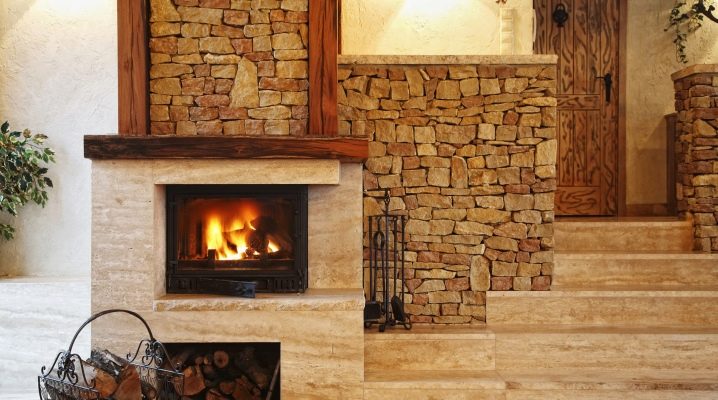
Nowadays, a wood-burning fireplace is not only a source of heat. This is a unique, decorative item for offices and living rooms, not inferior in importance to the rest of the interior elements. The wood-burning fireplace is very popular among the owners of summer cottages and country houses.
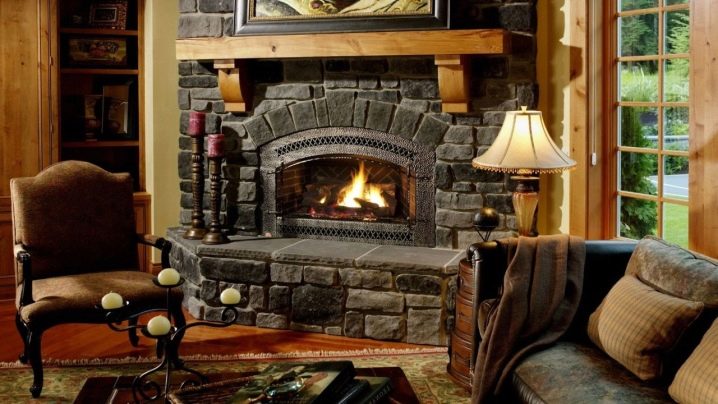
Peculiarities
Classic wood-burning fireplaces are designs in which the firebox is made like a niche made of heat-resistant material. Along with this, it is open towards the room. The device has a chimney in its design, which helps to remove combustion products from the room, as well as to create the draft necessary to maintain the fire.
The fireplace portal can have "P" -shaped or "D" -shaped. For its manufacture, brick or stone is usually used.
Due to some characteristics, wood-burning devices managed to take root only in private houses, which are usually located outside the city.
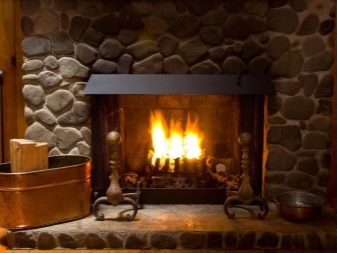
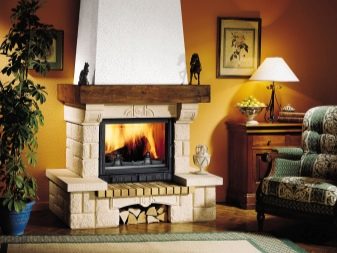
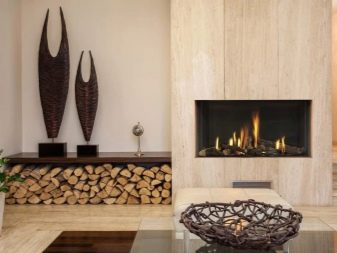

First of all, this is due to the fuel used in them. The use of a fireplace in an apartment is impossible due to non-compliance with fire safety rules. And too much space is required for storing firewood. But in the private sector, especially outside the city, wood-burning structures can form a unique atmosphere of home comfort, become an additional heat source for the home and even a place for cooking.
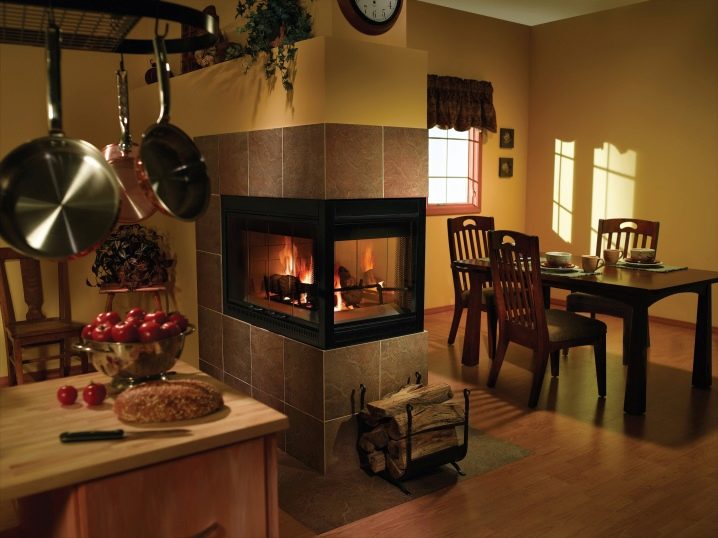
Views
Traditional wood-burning fireplaces can vary both in the decoration of the outer walls and in the type of firebox, in its location, in the method of heat transfer and the type of radiation. From all the variety of varieties of traditional fireplaces that use wood as fuel, you can choose the one that suits you best. It is important to know in advance what types of devices exist, and what are their differences. Classification by mount technology.
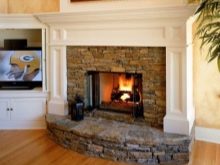


Wall fireplaces
These are stand-alone structures adjacent to the wall. Such fireplaces can be installed already in a rebuilt house. It is attached to a wall made of fire-resistant building materials. The chimney is also placed on the wall.
Fireplaces of this design usually have considerable weight and solid dimensions.
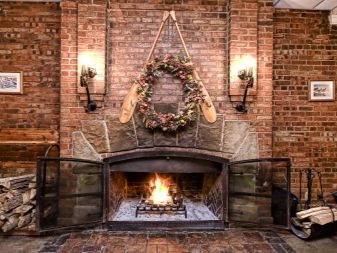
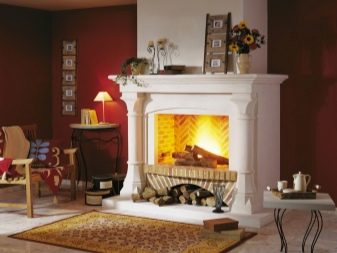
They are installed exclusively in spacious rooms., the floor and walls of which are capable of withstanding significant loads. Wall-mounted device portals are finished with ceramic tiles, bricks, wild or natural stone.
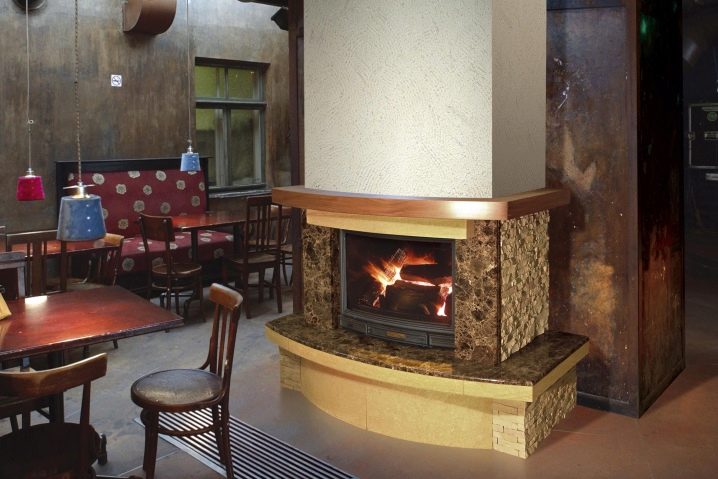
Built-in products
Erected at the stage of construction, renovation or modernization of the house. Part of the chimney and firebox is built into the masonry of the wall itself.
These fireplaces are small, therefore they can fit in bedrooms and small offices. The front of the firebox is sheathed with a half-brick border, trimmed with all kinds of decorative materials.
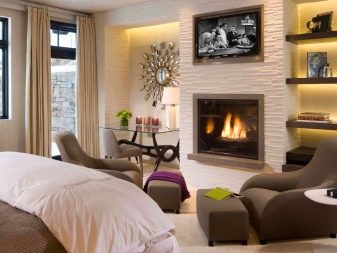
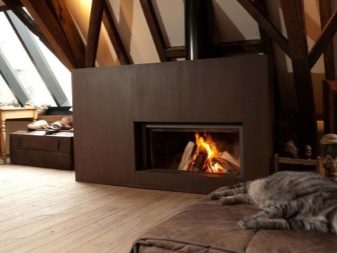
Corner fireplaces
They are localized in the corner of the room, which is very interesting in terms of the decoration of the room. The chimney is "hidden" in one of the walls. An open fragment of the firebox is made of light blocks, steel, concrete. The surface is covered with plaster, revetted with bricks, wild stone and other materials.

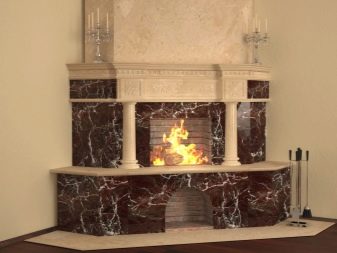
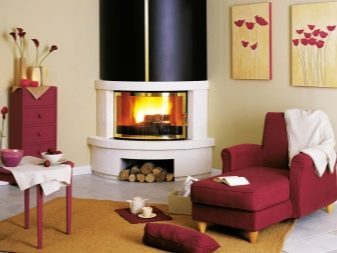
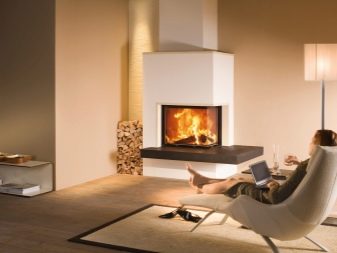
Island hearths
These are stand-alone constructions. A flat platform (base) is erected in the center of the room. It can be closed or open.The base goes into the smoke chamber (smoke collector), coupled with the chimney.
The heat transfer coefficient of these fireplaces is lowand the structure takes up a lot of space. The main difference is the originality of the performance.


Suspended structures
They are one of the modifications of the island type fireplaces. They are not tied to the floor, but rather hang from the ceiling. Hangers are usually made of iron, which is the lightest material. The combustion chamber can be closed or open.
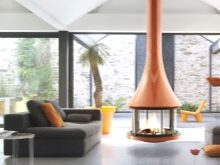
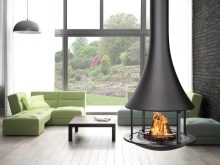
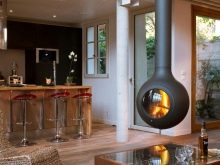
Fireplace modifications by purpose
Along with traditional fireplaces made of brick or natural stone, there are other examples.
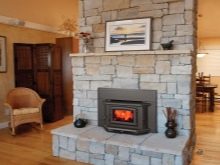
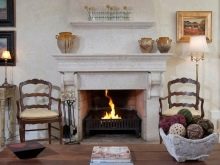
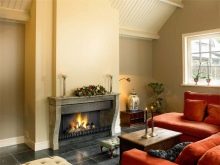
Fireplace stoves
Modification of the fireplace system, combining the functionality of the stove and the charming, attractive power of the fireplace. Often, such heating devices are equipped with two fireboxes and two chimneys. Thanks to this, they can be drowned both together and separately.
They build fireplace stoves in dachas, in garden buildings, where it is necessary not only to heat the room, but also to prepare food. Heating devices operate on wood fuel briquettes or wood.
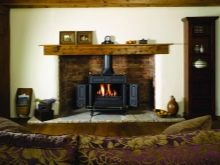
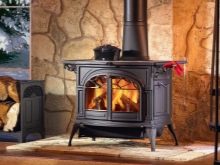

Outdoor fireplaces
They are similar in structure to traditional home fireplaces. They are built of stone, blocks made of concrete, brick, marble (the material is chosen depending on the climatic zone).
In chimneys of outdoor devices, a gate damper is not provided.
The main purpose of such devices is the design of landscape architecture, the formation of a home environment.
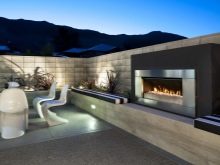
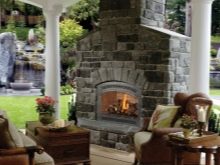
BBQ fireplaces
This is the outdoor version of the fireplace stove. An autonomous hearth, not connected to residential buildings, is being constructed for outdoor cooking. Barbecue fireplaces equipped with a grill, smokehouse, hob, hob, sink, cutting table, proper place for kitchen utensils are in demand.
To minimize the influence of atmospheric phenomena (rain, snow) on fireplace structures, they are arranged in gazebos, open-type garden houses, under canopies.
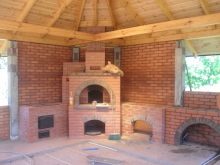
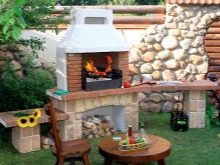

Decorative fireplaces
We are talking about bio fireplaces, false fireplaces, electric fireplaces, namely, those devices that do not require chimneys. Their main purpose is to decorate premises. They can be made from a wide variety of materials.

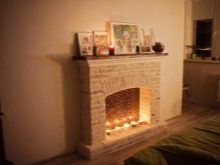

Modifications of fireplaces according to the type of combustion chamber:
- Open fireplaces. The firebox of such fireplaces can be open from one, 2, 3 or all 4 sides (island variations). Traditional heating devices are equipped with a firebox open on one side. Devices with an open firebox retain the romanticism of antiquity, the attractiveness of an open flame. They require systematic maintenance, special care, compliance with safety regulations, and need access to a large amount of oxygen.
- Closed fireplaces. The firebox of such devices is covered with heat-resistant glass or a fireplace door.
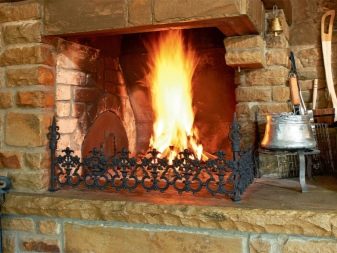
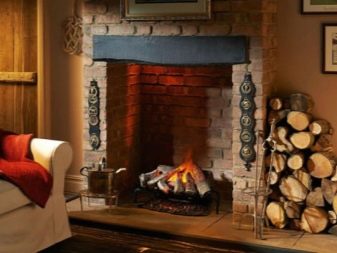
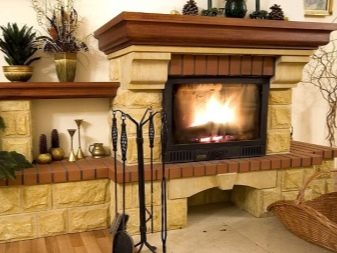

Classification by type of heat radiation:
- Devices with one-sided heat dissipation have a traditional design. The firebox is open from the front side, and the other three walls of the chamber are made with a slope. This design increases the heat output of the fireplace.
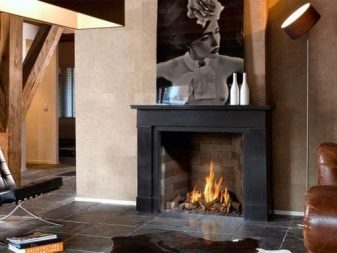

- Double-sided (with double-sided heat dissipation). Such devices look, of course, extraordinary.
In terms of operation, they have several flaws:
- a large heat dissipation surface needs more air;
- in front of the fuel chamber of such fireplaces, it is necessary to construct a protection of greater magnitude;
- the reflective area of the firebox is reduced, so too little heat is supplied to the room.
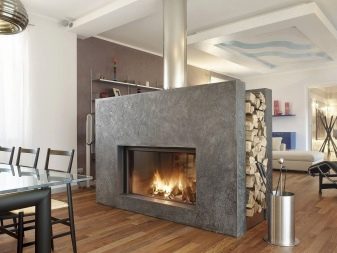
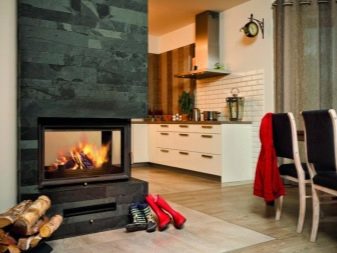
- Three-sided (with 3-sided heat dissipation). A fire open from 3 sides makes such constructions very interesting. But their protection must also be 3-sided.The heat output of fireplaces with 3-sided heat radiation is negligible, since the heat radiation only spreads from a single reflective plane.
- Four-sided (with 4-sided heat dissipation). Fireplaces are open from all sides. Therefore, they usually play the role of decoration without heating the room.
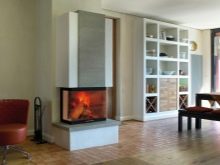
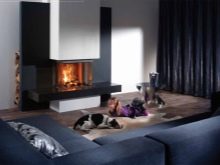
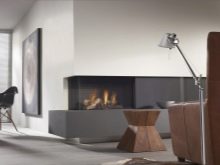
Fuel classification:
- Wood burning - traditional type of fireplaces with a firebox, portal and chimney. It is advisable to do it at the stage of building a house. Such structures should be erected by professionals, since omissions can provoke the appearance of smoke in the room, ignition and other unpleasant moments.
Wood-burning fireplaces require constant cleaning.
For them, aeration of the room is also of great importance. A wood-burning fireplace will be perfect for a place in a country house. But it is necessary to consider a place for storing auxiliary equipment and firewood.
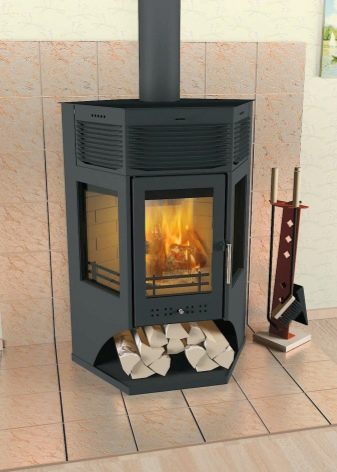
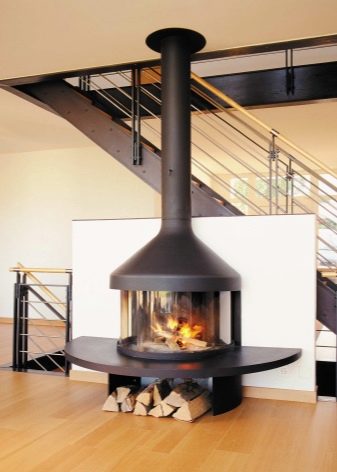
- Gas devices have a good heat output, quickly ignite. No chimney required. The pipe is led out into the open air or into a gas pipeline.
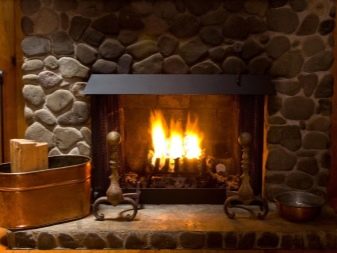
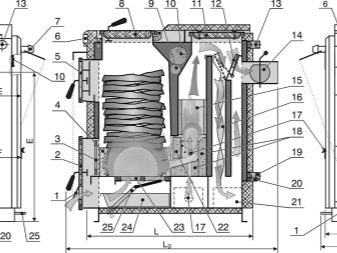
Blue fuel fireplaces are safer and cost less than wood burning fireplaces. The burner for burning gaseous fuel is controlled in auto mode. The imitation of the original fireplace is realized by means of ceramic decorative firewood, which glow red hot during the combustion process.
Such devices can also be installed in the apartment, but it is necessary to obtain a permitting document from the gas service. In addition, the installation of such devices should be carried out by gas workers.

- Electric fireplaces used to decorate interiors, and not for space heating. This is an excellent example for a city apartment. They operate from the electrical network and are not hazardous to use.
The small weight of the device, the absence of a chimney, and easy installation make independent installation available (without the involvement of specialists). They do not need to be cleaned, to rake the ash out of the firebox.
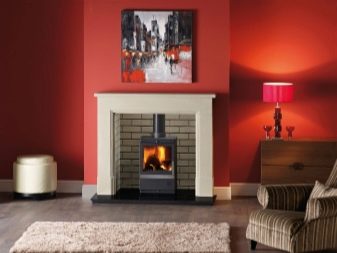
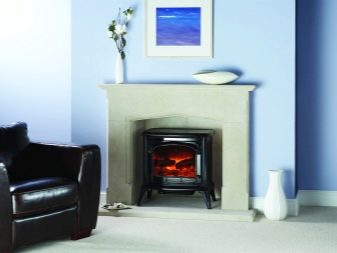
- Cassette type. Its name is associated with the design features; it has a special cassette - a steel firebox, covered with glass. The closed type firebox allows using the device indoors, since it is fireproof. The advantages include high functionality and a short chimney. There is a possibility of using the long burning mode.
- Bio fireplaces - ready-made decorative devices operating on ethanol or wine alcohol. A steel burner is mounted on the bottom of the body, into which fuel is poured. The fireplace is ignited with a specialized lighter or a long match. Another name for bio fireplaces is eco fireplaces. They are completely harmless to human health.
- Pellet fireplaces must be classified in a separate category because their structure and the type of fuel used have their own characteristics. Pellet devices are made from cast iron or iron. For finishing work, in most cases glass and ceramics are used.
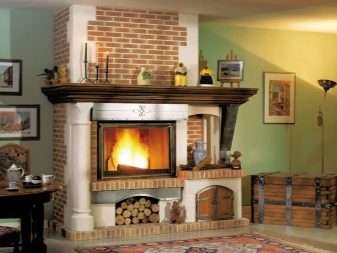
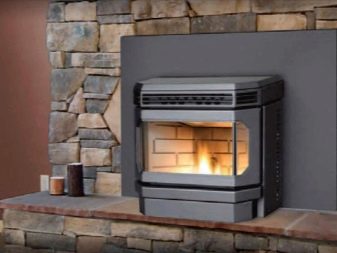

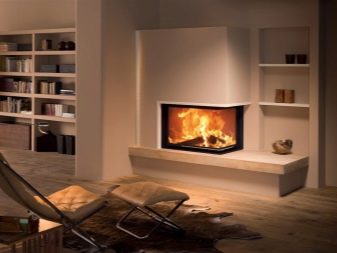
The fireplaces are arranged as follows:
- firebox;
- pellet burner;
- temperature sensors;
- ignition block;
- several electric motors and a control unit;
- compartment for fuel pellets and ash;
- chimney pipe.
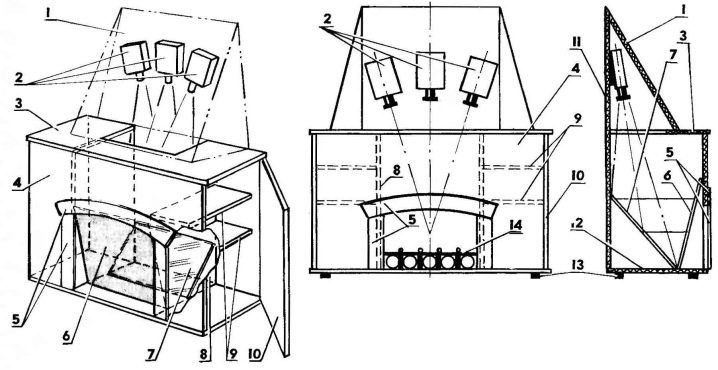
The pellets are loaded into a built-in tank. The duration of the functioning of the fireplace depends on the capacity of the container.
In automatic mode, pellets are fed into the firebox in portions. There, a specialized device injects air, creating conditions for a flame. In the lower zone of the casing there is an ash pan, where ash is poured.
In such devices, you can adjust the power, temperature, activation and shutdown times. Heating radiators can be connected to individual modifications.
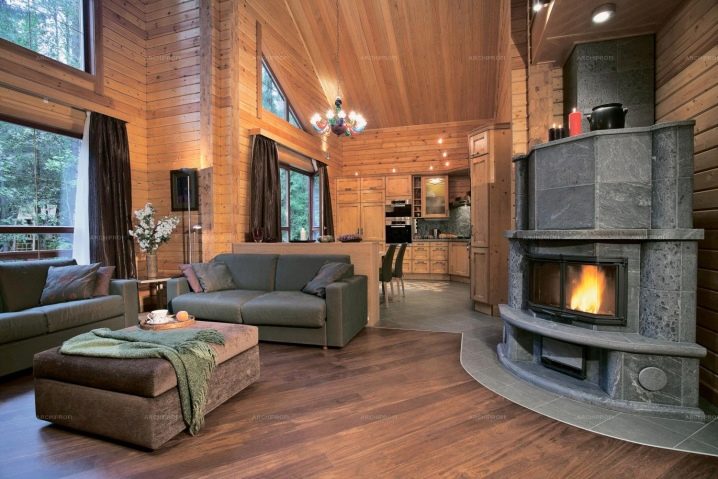
Design
The construction of a fireplace in a home is a responsible business that requires special skills and craftsmanship.Considering that this unpretentious construction will be the center of attention for residents and guests of the house, close attention is paid to the location and design of the fireplace.
Fireplace decoration can be:
- brick;
- stone;
- wooden;
- from ceramic tiles.
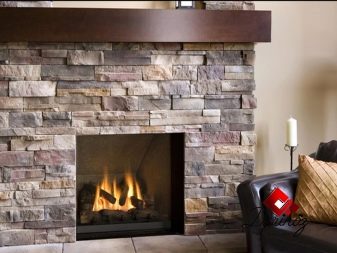
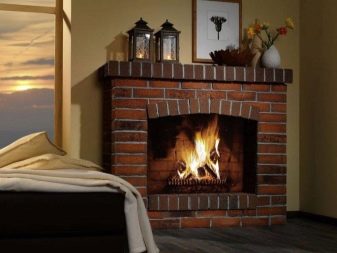
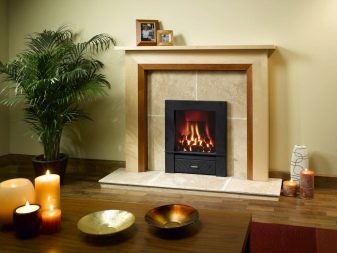
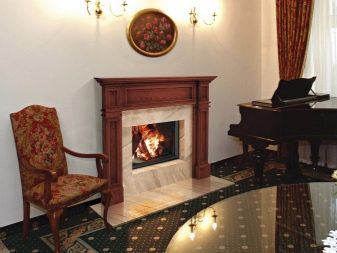
For cladding electric and false fireplaces in the living room, specialized niches are constructed from gypsum plasterboard.
The hallmark of the fireplace is the portal, which is always directed to the center of the room.
Portal design can be:
- granite;
- marble;
- metal;
- brick;
- ceramic;
- limestone;
- from wild and rubble stone.
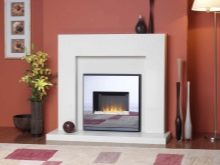
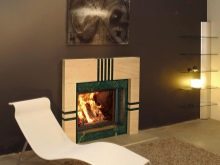
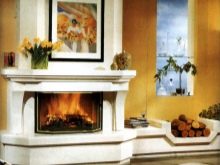

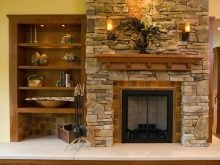
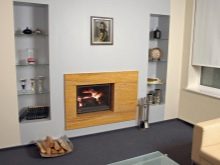
Genuine samples of fireplace craftsmanship, which later become the pride of the house, are created by professionals from the above materials. Such hearths contribute to the creation of a peaceful environment that brings warmth and comfort to the hosts and their guests.
Manufacturers
Among the Russian manufacturers of wood-burning fireplaces, the trademark can be distinguished "Meta"that interacts with foreign firms. The company offers an extensive selection of high quality portals that differ in their configuration and price.
Any fireplaces and stoves made in Belarus "Teplodar" will become not only an interesting decoration of the room, but also an excellent unit for heating the home. The company produces devices with a power of 6-12 kW.
From foreign manufacturers, one can single out Finnish fireplaces from companies Harvia, Tulikivi and NunnaUun.
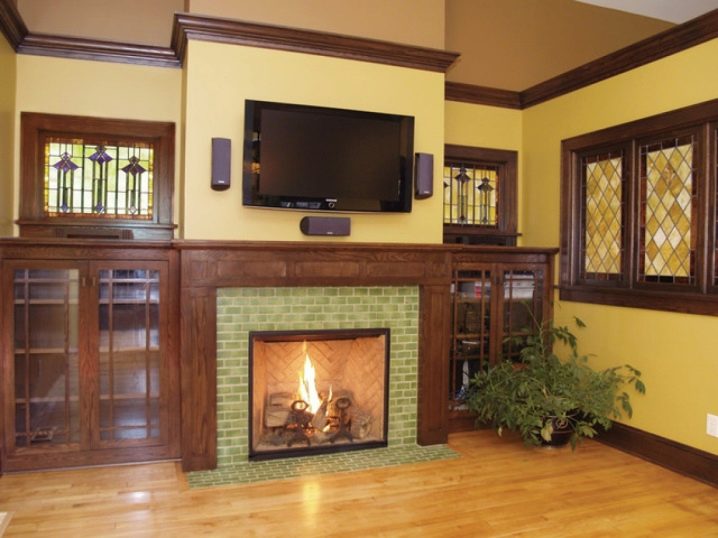
Tips & Tricks
The firebox is the main element of the fireplace. After all, firewood burns here, the main heat comes from here. The main task of the firebox is to maintain its configuration and integrity at high temperatures. They can be made of brick, cast iron or iron, it depends on the device.
If your task is to heat the house with this device, then you should choose a firebox with heat-accumulating components that will warm the room even after the fire has died out. Individual wood-burning stoves are even equipped with a water heating circuit.
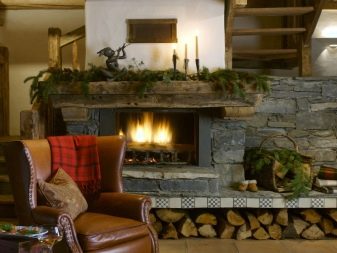
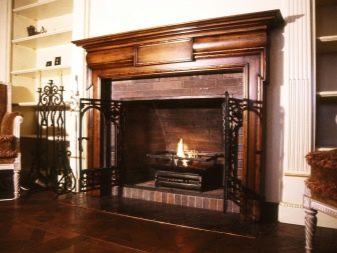
If we consider in detail the structure of devices in private houses, then it is necessary to pay close attention to chimneys.
They come in two configurations:
- straight chimney - the most popular type of hood, which is mounted directly in the process of building a house;
- an inclined chimney is a forced form, which is used if you have to install a fireplace in an already built building. This form makes it possible to connect to the existing ventilation system.
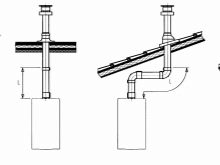
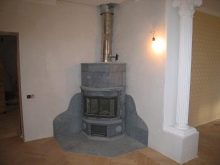
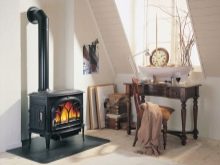
For the draft to be normal, the chimney must be above the standard stove pipe.
If it is round, it will reduce resistance and prevent the formation of a thick bloom of soot. The entire system functions due to the different saturations of hot smoke and outdoor atmosphere. The vacuum area sucks smoke out of the chimney.
The task of the chimney is to eliminate combustion products from the room: soot, carbon monoxide and smoke. It is important to check that all joints of bricks or pipes in the hood are properly sealed. This is the only way to ensure good traction.
Another prerequisite for good ventilation is the correct head (top) of the chimney pipe. The most that can be used is a rain deflector. Excessive attraction to jewelry can adversely affect the functioning of the chimney.


An important element is the grate. Usually this is a massive cast iron grate, it is placed on the bottom of the hearth. Firewood is placed on top of it. As it burns, the ash falls through the grate, without interfering with the systematic distribution of fire.

Beautiful examples in the interior
The most popular is the classic portal. For the most part, it is integrated into the wall and has a U-shaped configuration. Simpleness and expressiveness of lines, symmetry are inherent in him. False columns, bas-reliefs and ornaments can be used as decorations.
Designers advise to build a special shelf above the fireplace, where figurines, small objects and vases will flaunt. For decoration, you can use granite, marble. Forged lattices will be an additional decoration.
Pay attention to country style or rustic style (rough natural beauty).
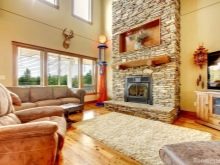
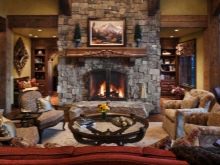
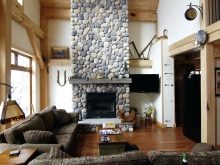
Such portals have a D-shaped configuration along with small or medium parameters. An indispensable accessory for such a fireplace is a wooden beam above the firebox, on which various small objects are located.
A casing can be placed over rustic structures. He will only play a decorative role. This style contains a wall or corner portal made of brick. For cladding, sandstone or shell rock is used.

The loft style became popular in the 60-70s of the last century. It is characterized by large rooms with unplastered walls and high ceilings. In rooms with such an interior, an island-type iron fireplace with glass doors will look great. Keep in mind that this style does not provide for abundant comfort. As a result, the room should have a minimum of furniture and a maximum of free space.
Modernism is also distinguished by minimalism.
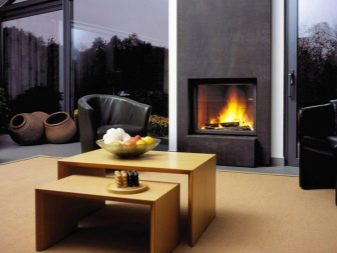

Unlike the previous project, such an interior assumes straight lines, focus on details and correct color solutions. In this room, fireplaces with a neat shape and color scheme, as well as glass and metal devices will look consistent.
The structure of the modern high-tech style contains structures of chrome, steel, heat-resistant glass and plastic. The portal can be of any configuration. Often, in such a device, only the back wall remains opaque. High-tech wood-burning appliances are an original option that is realized to order.
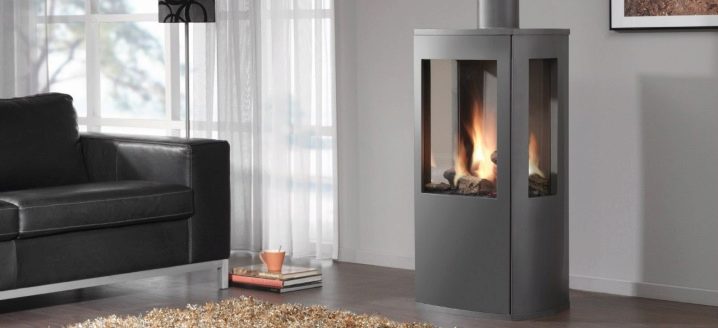
For more information on the wood-burning fireplace, see the following video.













The comment was sent successfully.